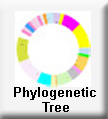


|
syn.
|
Criconemoides xenoplax Raski, 1952
Macroposthonia xenoplax (Raski, 1952) De Grisse & Loof, 1965 Criconemella xenoplax (Raski, 1952) Luc & Raski, 1981 Criconema pruni Siddiqi, 1961 Criconemoides pruni (Siddiqi, 1961) Raski & Golden, 1966 Macroposthonia pruni (Siddiqi, 1961) De Grisse & Loof, 1965 Mesocriconema pruni (Siddiqi, 1961) Andrássy, 1965 Criconemella pruni (Siddiqi, 1961) Luc & Raski, 1981 Criconemoides nainitalensis Edward & Misra, 1963 |
This species included in the Criconematid Project
DNA Sequences Obtained
| Specimen: | Collected: |
| Fresno 6 | from UC Davis |
| UCD-22 | from UC Davis |
| Platts-02 | Plattsmouth, NE |
| 16801 | Williams Prairie, Iowa |
| Konza FS-31 | Konza Prairie |
| PNID-223080 | Konza Prairie |
 |
 |
 |